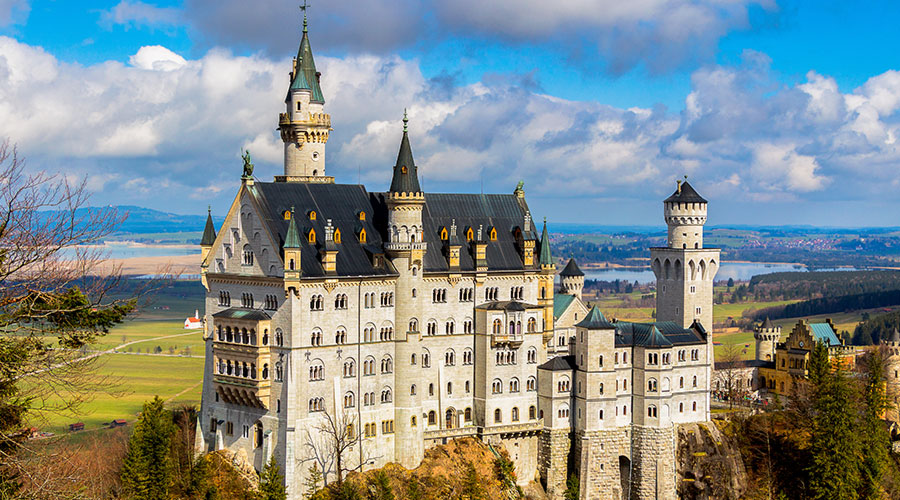
Imagine what it would be like to walk through the doors of the magnificent castle that provided the inspiration for Disney’s Sleeping Beauty palace. Close your eyes and just sit with that in your mind for a moment. It’s pretty incredible, isn’t it? What’s even better is the story of its owner and how this marvelous structure came to be.
Neuschwanstein Castle is a nineteenth-century Romanesque Revival palace built high on a rocky hilltop in Bavaria. Looking at it, one can easily imagine princes and princesses dancing the night away within its walls. But inside, underneath the sky high turrets and limestone facades, lived a reclusive king who wanted nothing to do with princesses or grand parties.
King Ludwig II was always a curious character. He was a dreamer who lived in a fantasy world that he built around himself as a refuge from reality. From childhood, Ludwig was incredibly shy and preferred to be isolated. These characteristics would become more pronounced as he got older—even choosing to sleep during the day and be awake alone at night as an adult.
Ludwig II was prompted to build his castle “in the authentic style of the old German knights’ castles,” as he wrote in a letter to composer and close friend, Richard Wagner. He had a fascination with Wagner and some of the paintings inside the castle depict scenes from Wagner’s operas such as “Tannhäuser” and “Lohengrin.” The castle was dedicated to the life and work of Wagner who died in 1883, having never visited the palace.
The gleaming and golden Throne Hall resembles a church and was modeled after Byzantine domed architecture. It symbolizes the king’s deeply religious nature and his idea of a monarchy by God’s grace.
Much of the castle appears to be straight out of a medieval poetic dream, but that’s only an illusion. Beneath all of that hid the very latest technology of the time. All of the rooms of the palace were heated with central heat. All floors had hot and cold running water and the toilets flushed. An electric call system allowed Ludwig to summon servants and an elevator made it easier to shuttle food up and down the stairs.
Work on the castle began in the summer of 1868 and was still not completed in 1886 when it was opened to the public only weeks after Ludwig’s suspicious death. While he only got to enjoy his castle for a mere 172 days, he never lived to see all of his plans for it come to fruition, leaving about 200 interior rooms unfinished.
The dreamy refuge built by a king who wanted to be left to his fantasies now hosts 1.4 million visitors each year. He probably wouldn’t be very happy with this if he were alive today.

